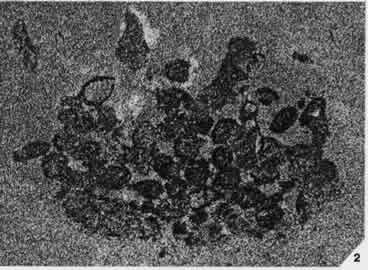

Section of a burrow identified as a larder based on the presence of nuts. Source: Gee et al., 2004 Used with permission
Identifying the animal
|Identifying the use
Modern burrows are most commonly used for shelter. Sometimes they are only used during part of the year, by the female rearing young. Other animals spend the unfavorable season inside the burrow, commonly in the state of torpor, or deep sleep. Still others forage underground, either for invertebrates, as the mole, for vertebrates, as the badger, or for plants, as the gopher. Finally, underground chambers may be used for storage, especially by species that hibernate (Voorhies 1975).
It is sometimes possible to identify the way in which a burrow was used. For instance, some chambers of the burrow system of Trirachodon contained juvenile skeletons in addition to adult ones. This possibly indicates that the burrow was used for rearing young (Groenewald et al. 2001).
The Miocene nut cache discovered in Germany is the earliest evidence of food hoarding, a type of behaviour common particularly among rodents. Based on the size of the burrow, the researchers attributed it to Lartetomys, an extinct genus of hamster (Gee et al. 2004). Such finds provide a rare record of the interactions between animals and plants. This interaction usually can not be resolved from the study of body fossil morphology.